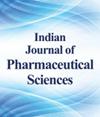利尿除石合剂对肾结石的影响及其对肾功能和尿水平的影响
IF 0.4
4区 医学
Q4 PHARMACOLOGY & PHARMACY
Indian Journal of Pharmaceutical Sciences
Pub Date : 2023-01-01
DOI:10.36468/pharmaceutical-sciences.spl.732
引用次数: 0
摘要
我们的主要目的是研究利尿剂排石合剂对体外冲击波碎石术后肾结石的影响及其对肾功能和尿n -乙酰- β -d-氨基葡萄糖酶、β -2微球蛋白、胱抑素C水平的影响。将150例接受体外冲击波手术的肾结石患者随机分为研究组和对照组,每组75例。对照组患者术后给予抗感染、止痛、止血等常规治疗方法,研究组患者在对照组的基础上给予利尿除石合剂治疗。用药周期为7 d。比较两组患者的治疗效果、症状评分、平均结石清除时间、肾功能相关指标、尿n-乙酰- β -d-氨基葡萄糖苷酶、β -2微球蛋白、胱抑素C水平、炎症因子水平及镇痛药物比例。研究组用药效果优于对照组(p<0.05),研究组症状评分、平均残余结石排出时间、肾功能指标、血肌酐、血尿素氮水平均低于对照组(p<0.05)。研究组尿n -乙酰- β -d-氨基葡萄糖苷酶、β -2微球蛋白、胱抑素C水平均优于对照组(p<0.05)。研究组炎症因子指标及镇痛药物使用率均低于对照组(p<0.05)。利尿剂除石合剂可显著改善体外冲击波碎石术后疗效,缩短除石时间,提高肾功能、尿n -乙酰- β -葡糖苷酶、β -2微球蛋白、胱抑素C等水平,提高炎症因子水平,降低镇痛药物使用率。本文章由计算机程序翻译,如有差异,请以英文原文为准。
Effect of Diuretic and Stone Removal Mixture on Kidney Stones and its Influence on Renal Function and Urinary Levels
Our main objective is to study the effect of diuretic Paishi mixture on renal calculus after extracorporeal shock wave lithotripsy and its effect on renal function and urinary N-acetyl-beta-d-glucosaminidase, beta-2 microglobulin, cystatin C levels. A total of 150 patients with kidney stones undergoing extracorporeal shock wave surgery were randomly divided into research group and control group with 75 subjects in each group. The patients in the control group were treated with routine methods such as anti-infection, pain relief and hemostasis after operation, while the research group was treated with diuretic and stone-dispelling mixture on the basis of the control group. The medication cycle is 7 d. The treatment effects, symptom scores, average time for residual stone removal, renal function-related indicators, urine N-acetyl-beta-d-glucosaminidase, beta-2 microglobulin, cystatin C levels, inflammatory factor levels and the proportion of analgesic drugs were compared between the two groups. The drug effect of the study group was better than that of the control group (p<0.05), the symptom score, average time of residual stone excretion, levels of renal function indicators, blood creatinine and blood urea nitrogen in the study group were lower than those of the control group (p<0.05). The levels of urinary N-acetyl-beta-d-glucosaminidase, beta-2 microglobulin and cystatin C in the study group were better than those in the control group (p<0.05). The indicators of inflammatory factors and usage rate of analgesic drugs in the study group were lower than those in the control group (p<0.05). Diuretic and stone removal mixture can significantly improve the postoperative effect of extracorporeal shock wave lithotripsy, shorten the time of stone removal, increase the levels of renal function, urinary N-acetyl-beta-dglucosaminidase, beta-2 microglobulin, cystatin C, etc., improve the level of inflammatory factors and reduce the usage rate of analgesic drugs.
求助全文
通过发布文献求助,成功后即可免费获取论文全文。
去求助
来源期刊

Indian Journal of Pharmaceutical Sciences
PHARMACOLOGY & PHARMACY-
自引率
0.00%
发文量
0
审稿时长
2 months
期刊介绍:
The Indian Journal of Pharmaceutical Sciences (IJPS) is a bi-monthly Journal, which publishes original research work that contributes significantly to further the scientific knowledge in Pharmaceutical Sciences (Pharmaceutical Technology, Pharmaceutics, Biopharmaceutics, Pharmacokinetics, Pharmaceutical/Medicinal Chemistry, Computational Chemistry and Molecular Drug Design, Pharmacognosy and Phytochemistry, Pharmacology and Therapeutics, Pharmaceutical Analysis, Pharmacy Practice, Clinical and Hospital Pharmacy, Pharmacovigilance, Pharmacoepidemiology, Pharmacoeconomics, Drug Information, Patient Counselling, Adverse Drug Reactions Monitoring, Medication Errors, Medication Optimization, Medication Therapy Management, Cell Biology, Genomics and Proteomics, Pharmacogenomics, Bioinformatics and Biotechnology of Pharmaceutical Interest). The Journal publishes original research work either as a Full Research Paper or as a Short Communication. Review Articles on current topics in Pharmaceutical Sciences are also considered for publication by the Journal.
 求助内容:
求助内容: 应助结果提醒方式:
应助结果提醒方式:


